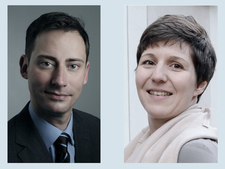-
Topics
subnavigation
Topics
Electromagnetic fields
- What are electromagnetic fields?
- Static and low-frequency fields
- Radiation protection relating to the expansion of the national grid
- High-frequency fields
- Radiation protection in mobile communication
Optical radiation
Ionising radiation
- What is ionising radiation?
- Radioactivity in the environment
- Applications in medicine
- Applications in daily life and in technology
- Effects
- What are the effects of radiation?
- Effects of selected radioactive materials
- Consequences of a radiation accident
- Cancer and leukaemia
- Genetic radiation effects
- Individual radiosensitivity
- Epidemiology of radiation-induced diseases
- Ionising radiation: positive effects?
- Risk estimation and assessment
- Radiation protection
- Nuclear accident management
- Service offers
-
The BfS
subnavigation
The BfS
- About us
- Science and research
- Laws and regulations
- BfS Topics in the Bundestag
- Links
Sun protection and skin cancer prevention: Cities in the focus as a result of climate change
Experts prompt city planners to actively develop measures for UV protection and thermal insulation
(Joint press information of Arbeitsgemeinschaft Dermatologische Prävention e.V., Stiftung Deutsche Krebshilfe, and the Federal Office for Radiation Protection)

In future, climate and climate change will have a significant impact on the health of people living in cities. Heat stress increases and experts foresee a rising skin cancer risk, because: People will spend more time outdoors on more sunny days . In order to give citizens the opportunity to protect themselves against excessive UV- and thermal solar radiation, prevention specialists demand urban development policy to actively address this scenario. That is the result of a specialist workshop in Hamburg which was carried out by Arbeitsgemeinschaft Dermatologische Prävention e.V. (ADP), Deutsche Krebshilfe, and the Federal Office for Radiation Protection (BfS) at the end of April.
Climate change and UV radiation
In Germany, the harbingers of climate change are already perceivable today. Together with the persistent increase of the CO2 content in the air, the average temperature of the near-earth atmosphere increases, too. Just the short period since 2001 included altogether 16 of the 17 warmest years since weather records began. Extreme weather events such as heatwaves, droughts, and extreme rainfall are on the increase. "Currently, there are no signs of the trend reversing. Without an ambitious climate protection, the health effects on humans and animals will be disastrous,"
said Prof. Dr. Mojib Latif, climate expert at the GEOMAR Helmholtz Centre for Ocean Research Kiel.
More frequent warmer days also tempt many people to spend more time outdoors, as a result they are more exposed to solar UV radiation. Furthermore, the climate change is linked with so-called low-ozone situations in the northern hemisphere, which may lead to unusually high UV values in the springtime also in this part of the world.
Perception of heat and UV radiation
"We are not able to perceive UV radiation. With a cloudy sky or a cool summer wind, the heat sensation can lead to a false assessment of the UV intensity,"
Prof. Dr. Eckhard Breitbart, Chairman of Arbeitsgemeinschaft Dermatologische Prävention, emphasises. Annually, about 290,000 persons newly develop skin cancer in Germany, of which about 36,000 develop the dangerous malignant melanoma.
Each high exposure to UV radiation from early childhood increases the risk to develop skin cancer later on. "Avoid being exposed to intense sun, especially during childhood,"
the European Code against cancer of the International Agency for Cancer Research (IARC) therefore states, which directly addresses the population.
Sun protection measures in everyday urban life
Intense sun may occur in many places of everyday life, such as at the workplace, in the schoolyard, in the daycare outside area, in parks, or on the football pitch. The UV protection alliance, a body of experts initiated by the Federal Office for Radiation Protection (BfS), therefore demands the national establishment of environmental preventive measures: "Our living and working environment should be designed in such a way that everyone staying outdoors is able to avoid exposure to high UV radiation. That is the responsibility of environmental preventive measures of skin cancer,"
said Dr. Cornelia Baldermann, co-ordinator of the BfS UV protection alliance. Among others, this includes the development, planning, and implementation of design measures such as the set-up of shady places.
Urban development and environmental prevention of health effects due to the sun
In modern, urban development concepts the UV exposure has so far hardly played a role, however. "The express goal of architecture and urban development is to create high-quality buildings and exterior spaces. In view of environmental conditions in the urban context becoming more extreme, it will be necessary for the environmental prevention to play a stronger role in the design of our cities in future. For example, in order to counteract adverse UV radiation, the use of shading devices in the planning of exterior space is one element to create quality of life in the city,"
Dr. Anke Jurleit, planner at Drees 6 Sommer Infra Consult und Entwicklungsmanagement GmbH, emphasised.
By designing appropriate urban development concepts which also take into account possibilities for the protection against UV radiation in everyday life, it is thus possible to make a vital contribution to reduce the skin cancer risk in the long run. Information and recommendations on this topic are provided by the UV protection alliance and the findings document of the scientific workshop "Environmental prevention of skin cancer in urban life worlds" (Hamburg). Important topics are:
- Regional modelling- and visualisation options of UV exposure
- Holistic design planning of exterior space and development of indicators
- Providing green areas in cities
- Ensuring awareness of stakeholders
State of 2017.06.13



